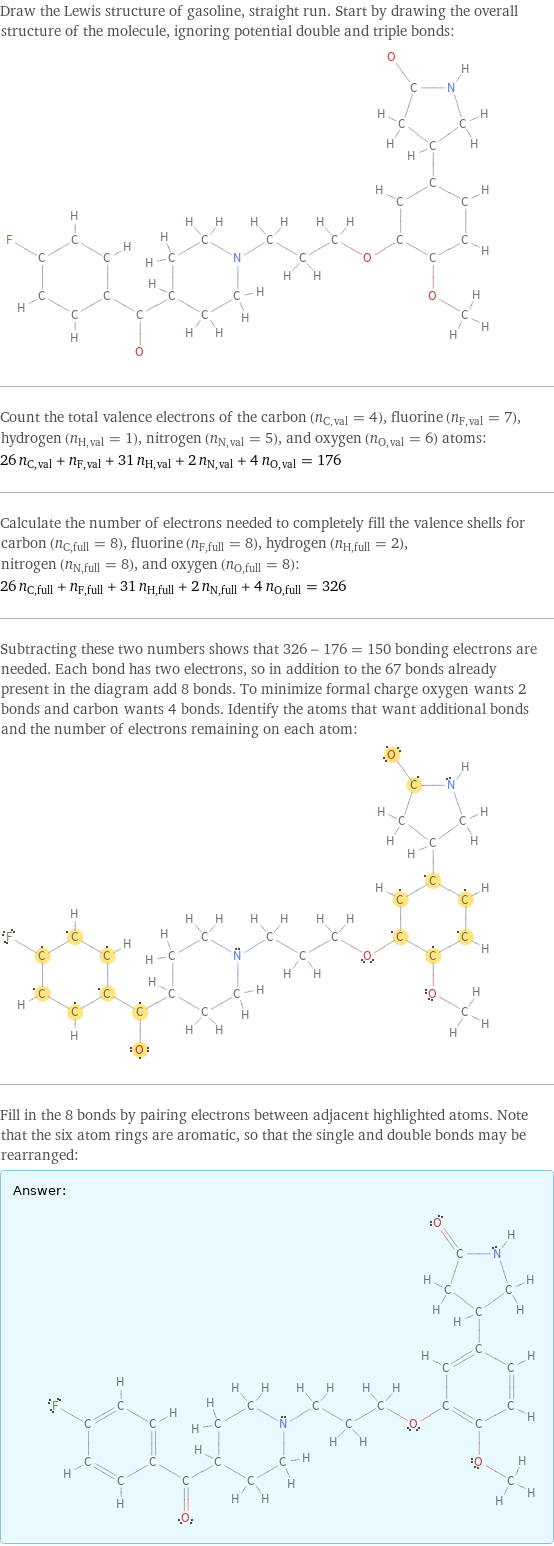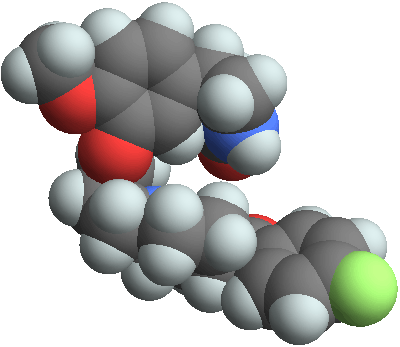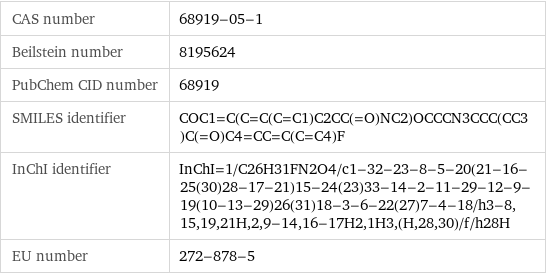Input interpretation

gasoline, straight run
Chemical names and formulas
![formula | C_26H_31FN_2O_4 name | gasoline, straight run IUPAC name | 4-[3-[3-[4-(4-fluorobenzoyl)-1-piperidyl]propoxy]-4-methoxy-phenyl]pyrrolidin-2-one mass fractions | C (carbon) 68.7% | F (fluorine) 4.18% | H (hydrogen) 6.87% | N (nitrogen) 6.16% | O (oxygen) 14.1%](../image_source/64b30a315b5a84d2c250242cf87e43b9.png)
formula | C_26H_31FN_2O_4 name | gasoline, straight run IUPAC name | 4-[3-[3-[4-(4-fluorobenzoyl)-1-piperidyl]propoxy]-4-methoxy-phenyl]pyrrolidin-2-one mass fractions | C (carbon) 68.7% | F (fluorine) 4.18% | H (hydrogen) 6.87% | N (nitrogen) 6.16% | O (oxygen) 14.1%
Lewis structure

Draw the Lewis structure of gasoline, straight run. Start by drawing the overall structure of the molecule, ignoring potential double and triple bonds: Count the total valence electrons of the carbon (n_C, val = 4), fluorine (n_F, val = 7), hydrogen (n_H, val = 1), nitrogen (n_N, val = 5), and oxygen (n_O, val = 6) atoms: 26 n_C, val + n_F, val + 31 n_H, val + 2 n_N, val + 4 n_O, val = 176 Calculate the number of electrons needed to completely fill the valence shells for carbon (n_C, full = 8), fluorine (n_F, full = 8), hydrogen (n_H, full = 2), nitrogen (n_N, full = 8), and oxygen (n_O, full = 8): 26 n_C, full + n_F, full + 31 n_H, full + 2 n_N, full + 4 n_O, full = 326 Subtracting these two numbers shows that 326 - 176 = 150 bonding electrons are needed. Each bond has two electrons, so in addition to the 67 bonds already present in the diagram add 8 bonds. To minimize formal charge oxygen wants 2 bonds and carbon wants 4 bonds. Identify the atoms that want additional bonds and the number of electrons remaining on each atom: Fill in the 8 bonds by pairing electrons between adjacent highlighted atoms. Note that the six atom rings are aromatic, so that the single and double bonds may be rearranged: Answer: | |
3D structure

3D structure
Basic properties

molar mass | 454.54 g/mol
Units

Chemical identifiers

CAS number | 68919-05-1 Beilstein number | 8195624 PubChem CID number | 68919 SMILES identifier | COC1=C(C=C(C=C1)C2CC(=O)NC2)OCCCN3CCC(CC3)C(=O)C4=CC=C(C=C4)F InChI identifier | InChI=1/C26H31FN2O4/c1-32-23-8-5-20(21-16-25(30)28-17-21)15-24(23)33-14-2-11-29-12-9-19(10-13-29)26(31)18-3-6-22(27)7-4-18/h3-8, 15, 19, 21H, 2, 9-14, 16-17H2, 1H3, (H, 28, 30)/f/h28H EU number | 272-878-5
NFPA label

NFPA label

NFPA health rating | 1 NFPA fire rating | 2 NFPA reactivity rating | 0